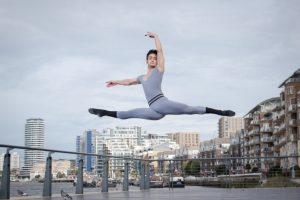Ballet is for everyone, says Ballet dance teacher Fernando Aguilera

Ballet is a highly technical and expressive form of dance, known for its graceful, precise movements and emphasis on strong technique. Originating in Renaissance Italy and flourishing in France, it has become a major genre in Western dance. In India, ballet is a relatively recent addition to the rich landscape of classical dance, gaining popularity among contemporary dancers and audiences.
Many Indian choreographers blend ballet with traditional Indian dance forms to create innovative fusion performances. Today, ballet is taught in several Indian dance schools, contributing to a global appreciation of diverse dance traditions. I spoke with the master of Ballet Fernando Aguilera who has been teaching ballet in India for over 30 years:
Tell us a bit about your background and how you became a ballet teacher?
My journey into ballet began at a young age. I started dancing at six in my hometown in Mexico City. My parents weren’t dancers, but they recognized my passion and enrolled me in a local dance school. I fell in love with ballet’s discipline and beauty. After years of training, I moved to Europe to study at the Royal Ballet School in London. It was a transformative experience that shaped my artistry and teaching philosophy.
What inspired you to transition from performing to teaching?
After dancing professionally for over a decade, I felt a calling to share my knowledge with the next generation. Teaching allows me to pass on the artistry and discipline I learned while nurturing young talent. There’s something incredibly rewarding about watching students grow and discover their passion for ballet.
What do you think are the most important qualities a ballet teacher should possess?
Patience and empathy are crucial. Every student learns differently, and understanding their individual needs is key. Technical knowledge is essential, but so is the ability to inspire and motivate. I believe in creating a supportive environment where students feel safe to express themselves and take risks.
How do you approach teaching various age groups and skill levels?
I tailor my approach to each group. With younger students, I focus on fostering creativity while instilling fundamental techniques. For more advanced dancers, I emphasize refining their technique and exploring emotional expression in performance. I often incorporate improvisation to help them connect with their bodies and develop their unique voices as artists.
How do you encourage students to express themselves creatively through ballet?
I encourage students to explore their emotions and interpret the music personally. We often discuss the stories behind the pieces we dance and how they can relate those narratives to their own lives. I also introduce improvisational exercises where they can experiment with movement without the pressure of perfect technique.
How do you handle challenges, such as students struggling with technique or motivation?
Every dancer faces challenges at some point. I believe in open communication; I always encourage students to express their frustrations. I work with them to set achievable goals, breaking down techniques into manageable steps. Sometimes, a change of focus can reignite their motivation—whether it’s exploring a new style of dance or working on choreography that excites them.
Balancing technique with artistry can be tough. How do you approach this balance in your teaching?
It’s a delicate balance, but I emphasize that technique is the foundation of artistry. Without a strong technical base, it’s challenging to express oneself fully. I incorporate exercises that reinforce technique while also encouraging students to interpret the music and choreography in their unique ways. For example, in combination classes, I might spend the first half on technique and the second half on performance, merging the two aspects.
What role does music play in your classes?
Music is fundamental to ballet! It inspires movement and emotion. I always select music that resonates with the piece we are working on. I also encourage students to listen to the music actively, identifying how it shapes the movement. Sometimes, I let them choose their music for improvisation, which fosters their personal connection to the dance.
In your experience, what are some common misconceptions about ballet?
One misconception is that ballet is only for a select few who are naturally gifted. In reality, dedication and hard work are what truly matter. Ballet is for everyone, regardless of body type or background. Another misconception is that ballet is rigid and unyielding. While there is structure, there’s also a vast spectrum of expression and creativity within it.
What are your aspirations for the future of your students and your teaching?
My aspiration is for my students to become confident, expressive dancers who appreciate the beauty of ballet and its power to tell stories. I hope they find joy in their journey, whether they pursue a professional career or dance for personal fulfilment. For my teaching, I want to continue evolving, exploring new methodologies, and sharing my passion for dance with a broader audience.
What advice would you give to aspiring ballet dancers?
My advice would be to embrace the journey. Ballet is challenging, but every step—whether a triumph or setback—is part of growth. Stay curious, be open to learning, and never lose sight of your passion. Surround yourself with supportive people who believe in you, and remember that every dancer has their unique path.
Sandip Soparrkar holds a doctorate in world mythology folklore from Pacific University USA, an honorary doctorate in performing arts from the National American University, He is a World Book Record holder, a well-known Ballroom dancer and a Bollywood choreographer who has been honored with three National Excellence awards, one National Achievement Award and Dada Saheb Phalke award by the Government of India. He can be contacted on sandipsoparrkar06@gmail.com


